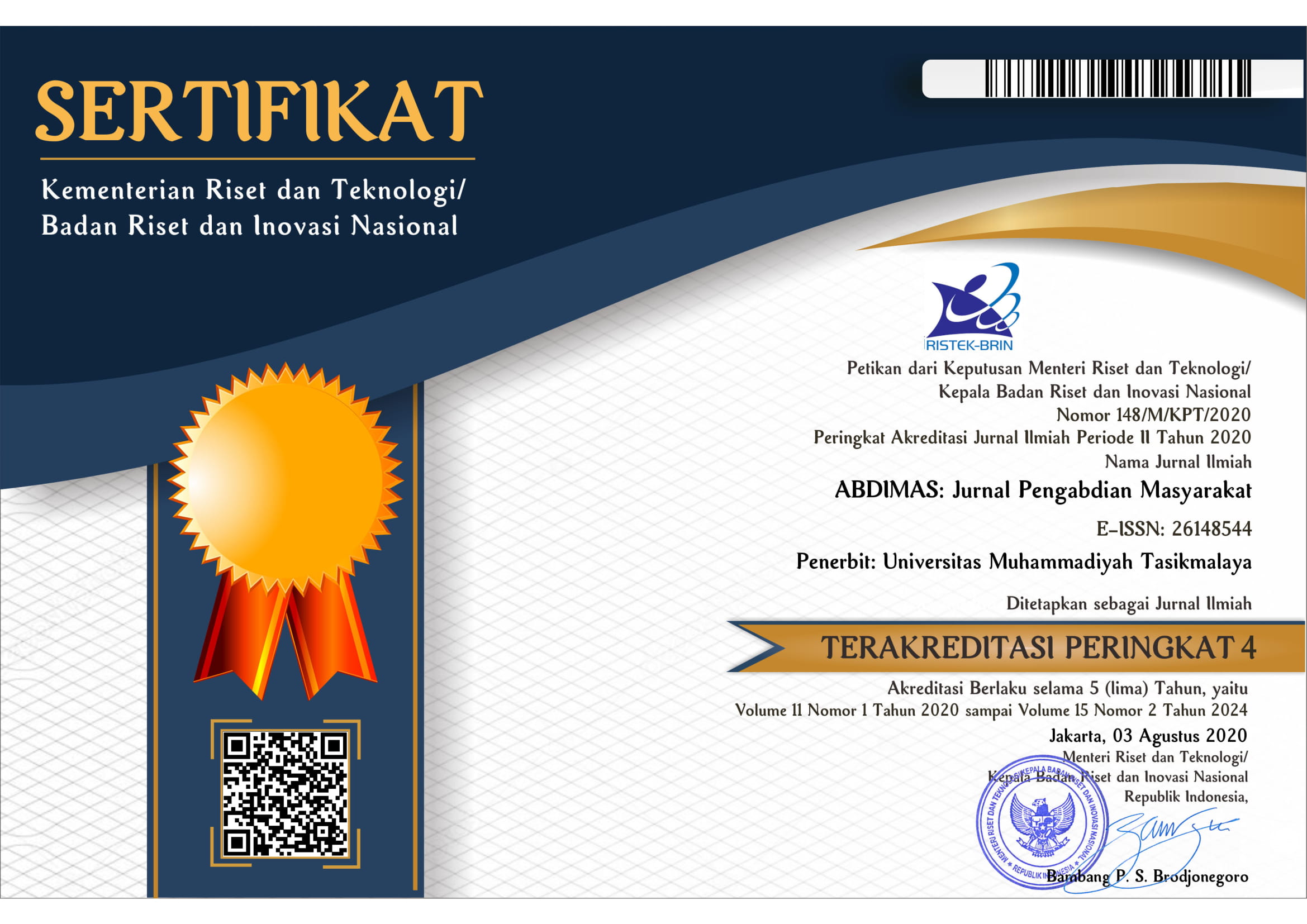School-Based Sexual Health and Reproduction Education in Early Adolescents at Muhammadiyah Junior High School
DOI:
https://doi.org/10.35568/abdimas.v6i2.3301Keywords:
Early adolescent, health education, reproductive healthAbstract
Background: Switch on. Adolescence is also a critical period that must be properly addressed and addressed by adolescents. Changes in body shape, especially in the reproductive organs, invite many questions from adolescents, such as the presence of bleeding from the vagina for the first time (menarche), the first wet dream in boys (semenarche). Teenagers must be prepared to face puberty with various changes and the first experiences that occur. Teenagers need information that can solve the problems they face. Health education about sexual and reproductive health is very important to do, as an effort to increase knowledge in dealing with puberty. The sexual and reproductive health education program for adolescents in facing puberty is one solution that can be done to increase students' knowledge in facing puberty. This activity aims to increase adolescents' knowledge about puberty and maintenance of the reproductive organs as well as to form positive attitudes and behaviors in adolescents. Method: Providing health education to 120 grade 7 students in stages using podcast media, distributing leaflets and posters. Evaluate activities by measuring pre-test and post-test scores. Results: There was a significant difference in knowledge from before and after the program was implemented with a value of p = 0.000 (p <0.01) with a mean pretest score of 3.43 ± SD 2.36 and a mean posttest score of 7.26 ± SD 1.79. The mean difference is 3.83±SD 2.57. Conclusion: Sexual and reproductive health education is proven to increase students' knowledge in dealing with puberty and care for reproductive organs.
Downloads
References
BKKBN. (2013). Remaja dan permasalahannya dari perhatian dunia (online). http://www.bkkbn.go.id/viewberita.aspx?beritaid=840
Blum, R. & Mmari, K. (2004) Risk and protective factors affecting adolescent reproductive health in developing countries: an analysis of adolescent sexual and reproductive health literature from around the world. Summary.
BPS. (2019). Statistik Indonesia 2019. Badan Pusat statistik Indonesia. Jakarta. ISSN. 0126-2912
Depkes, R.I. (2012) Laporan hasil riset kesehatan dasar (RISKESDAS) Nasional. Badan Penelitian dan Pengembangan. Departemen Kesehatan RI. Jakarta
Hastuti, L. (2020). Standar kualitas pelayanan kesehatan remaja. Kanaka Media. Surabaya
Hesty, Nurfitriani. (2023). Edukasi Personal Hygiene Saat Menstruasi pada Siswi SMP Negeri 25 Kota Jambi. Jurnal Abdimas Kesehatan (JAK), Vol. 5 (1): 24-30. DOI: 10.36565/jak.v5i1.398 24. Available Online https://jak.stikba.ac.id/index.php/jak
Mmari, K. & Sabherwal, S. (2013) A review of risk and protective factors for adolescent sexual and reproductive health in developing countries: an update. Journal of Adolescent Health, 53(5): 562-572.
UNICEF. (2012). Indonesia annual report 2012. Indonesia. UNICEF
Wardah. A. (2018). Pemahaman diri siswa smp tentang masa pubertas (baligh) sebagai fondasi layanan bimbingan dan konseling. Jurnal Bimbingan dan Konseling Ar-Rahman Volume 4, Nomor 2,Tahun 2018 Tersedia Online: http://ojs.uniska.ac.id/index.php/BKA e-ISSN 2477-6300
WHO. (2011). The sexual reproductive health: informing future research and program implementation. Geneva.Switzerland. WHO.
Moodi, M., Zamanipour, N., Sharifirad, G.-R. & Shahnazi, H. (2013) Evaluating puberty health program effect on knowledge increase among female intermediate and high school students in Birjand, Iran. Journal.














